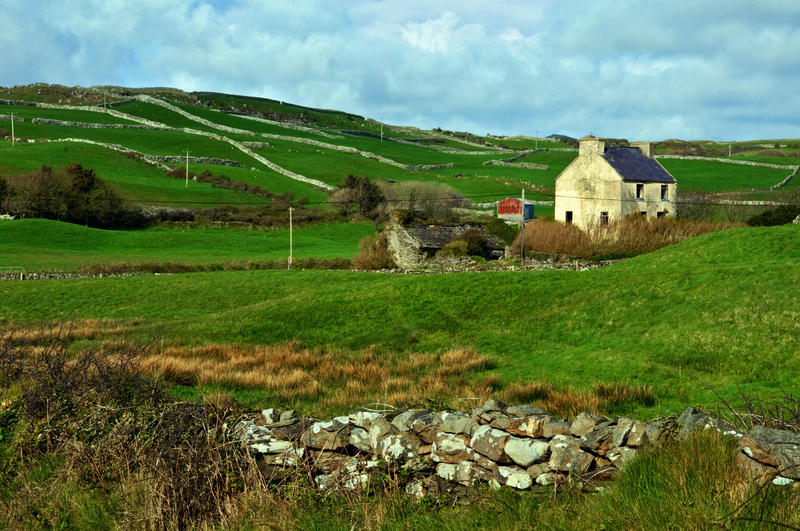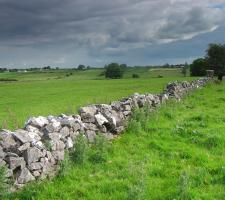
Connected and autonomous vehicles (C/AVs) have the potential to be a vital link for people in rural communities, as part of a wider Mobility as a Service (
“This is how to work towards a mobility system that is sustainable on all the major fronts: environmentally, socially and economically,” she said in a presentation at ITS International’s
Remote populations, in particular, could find help through MaaS. Ireland is a relatively small country - you can drive from the very south to the very north in about six hours, O’Halloran pointed out. But in between there are huge pockets of countryside with very few communities and there is a real issue with enforced isolation – particularly if you are elderly, young, or have no access to a car.
She explained: “We often hear that C/AVs and MaaS are going to be the solution for last-mile connectivity. We have our own particular version of last-mile requirements because we have a really, really low population density in Ireland, and a lot of people living in one-off houses.”
This presents specific problems, she went on. “Whilst you might talk about the last mile between your house, or a bus stop or a train station, for a lot of people it’s 10 miles, or it’s 15 miles - and it’s just not going to be possible when it rains 300 days of the year to cycle or to walk those distances. So there has to be another solution. At the moment, people living in these rural communities or even in these one-off houses are nearly 100% dependent on private cars - and of course that excludes all of the non-driving population.”
This means that imaginative ways round the problem have to be found. “So if we looked at designing a MaaS system that would of course incorporate C/AVs – then here they would have a huge role to play in providing a solution. They would be able to fill some of the service gaps – but only as part of a MaaS system. They would be lower cost, due to the long-term lower running costs of AVs, and they would also be able to provide more specialised solutions. So perhaps taking people from these smaller communities the 10 miles to the bus stop – or taking all of them at the same time into the town or city.”
She admitted these were possibilities at present, and that a great deal more work needs to be done to establish their viability. “But these are the things we are looking at when we consider what we really have to do,” she said. “We have a rural transport problem and these are some of the things that we are looking at to try and make it more sustainable.”
It invariably helps to understand an issue if you are able to personalise it. And this is why O’Halloran mentions the example of an elderly family relative. “I like to bring my grandad to all of these presentations,” she smiles. “It’s a problem that a lot of people are facing in their families at the moment. And if it weren’t an elderly person it might just as easily be my eight-year-old cousins who would experience some of the same difficulties. That makes it more easy for people to relate to.”
She also says there is potential for things such as the scheduling of medical appointments for people “living in similar areas, for similar times of the day, with shared transport that makes everybody feel a bit more at ease”.
Money is an issue, of course. There must be a role for government to subsidise the development of services, particularly in rural areas. “Typically, they say running a transport service in rural areas is a loss-making venture so it’s harder for government to justify that expenditure,” O’Halloran suggested. “Perhaps more innovative solutions – particularly that are technology-based – might be a better solution for some of those rural community issues. But what complicates the matter in Ireland is that a lot of people living in rural isolation are also elderly. So they aren’t able to use phones the correct way to get access to the services that more tech-savvy people would be able to.”
O’Halloran says Arup is enthusiastic about the possibilities for the future – and in particular for the possibilities which MaaS throws up. “We like to think of it as a sort of Robin Hood solution for public transport – so when we have enough people subscribing to a MaaS scenario, and there will be far more contributors in terms of financing, there will be more money in the pool of public expenditure on transport potentially, for us to redistribute: to each according to their means, to each according to their needs. And when we talk about any sort of redistribution of wealth, which touch issues of social equity, then we do require buy-in from the government.”
French rural mobility solution
RezoPouce is, in effect, a community-based hitch-hiking service which has been running in rural areas of France – where approximately 22 million of the country’s inhabitants live. It is present in as many as 2,000 municipalities, covering 20% of rural France. It was created in 2009 for young people taking journeys under 20km, for which traditional car-pooling platforms could not be used. This evolved to any user who did not have a car at their disposal, and today all ages between 16 and 74 are represented – with most between 30 and 60 years old.
Men and women are equally represented in the service, which is used mainly for daily activities – including as part of a commute to reach a railway station or a bus stop.
Target groups and users can be different from town to town as each decides who to focus on and the local authorities decide with RezoPouce where to locate the pick-up spots.
Users and drivers need to provide an ID card, a photo and to sign a charter of good behaviour. They get a mobility kit which contains a sticker to put on their car window, destination cards for hitchhikers, a manual and a list of hitch-hike points.
Users of the service go to pre-determined places and wait for their driver, who they can see approaching on an app.
The idea is that drivers and users are part of a community that provides services to one another – with the ‘operators’ providing a car service to other people for the pleasure of it. In fact, most users are registered both as drivers and passengers.
Source: SMARTA






